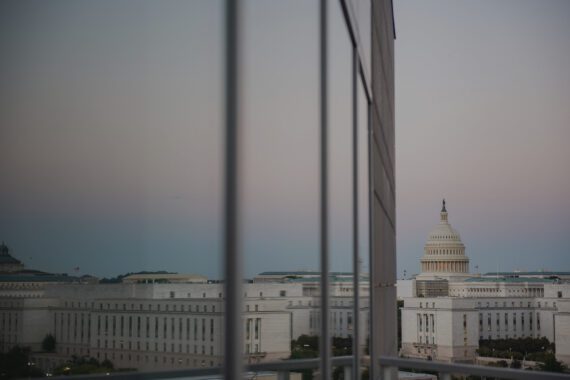By Robin Stephenson
Sequestration was never meant to be the law of the land. In fact, the proposal to cap discretionary funding in the federal government’s budget was meant to be so unsavory that it would force members of Congress to negotiate a responsible solution to deficit reduction. In 2011, they failed to reach an agreement.
Sequestration is a choice – a choice that can be changed when Congress negotiates funding levels for the fiscal year 2016 budget on their return from recess.
Budgeting by fiat has gone on far too long.
Sequestration shrinks the overall size of the federal pie (the total amount the government has to spend), putting many anti-poverty programs at risk. Since 2011, the automatic caps have dictated the federal budgeting process, with the exception of two years of relief with the Ryan-Murray deal. But unless Congress acts, additional cuts will return in the fiscal year 2016 and continue through 2021.
Sequestration will cut non-defense appropriated programs, such as the Supplemental Nutrition Assistance Program for Women, Infants, and Children (WIC), Head Start, Feed the Future, and other important nutrition programs by $37 billion each year through 2021.
The Congressional Budget Office recently told Congress that replacing sequestration would lead to higher employment and increased economic output.
Here are five things you need to know about sequestration.
- Sequestration treats everything alike. Sequestration subjects non-defense programs, such as WIC – a program Bread members are advocating for as part of this year’s Offering of Letters – to the same cuts as defense programs. Some members of Congress have called to alleviate defense caps but are silent on caps that affect programs for low-income families.
- Sequestration removes responsibility: Sequestration was put in place to force Congress to make tough budget choices on raising revenues and cutting mandatory spending. Rather than making tough choices, members of Congress are letting sequestration hit yearly appropriated spending again and again.
- Sequestration erodes the safety net: Churches and charities would be expected to pick up the slack. To make up the difference, every house of worship of every faith would have to raise $105,714 each year. Churches can’t do it alone.
- Elections complicate matters: As we head into an election year, it will become harder to replace sequestration in the next two years unless Congress acts now. If the caps continue, Congress will struggle to offset cuts, and that likely means targeting what they consider low-hanging fruit. Anti-hunger programs will be on the chopping block.
- Your voice will be the difference: Time and time again, your faith-based advocacy has protected anti-hunger programs. When the deal that led to sequestration passed in 2011, your calls and emails to Congress helped exempt programs like SNAP (formerly known as food stamps), Medicaid, and the earned income and child tax credits.
Contact your members of Congress today, and tell them to replace sequestration and pass a budget that funds programs that help low-income families. To learn more about sequestration, read The Consequences of Sequestration and Tight Budget Caps.
Photo: In 2013, nearly 70 percent of Meals on Wheels programs had to drop the number of meals they served to poor seniors as a consequence of sequestration.



